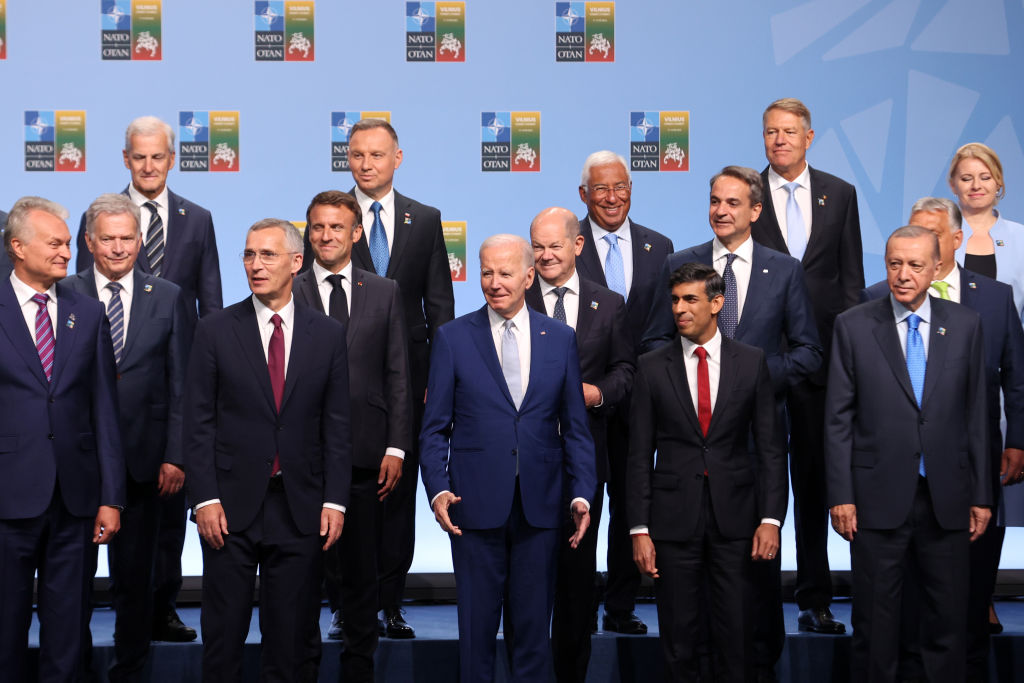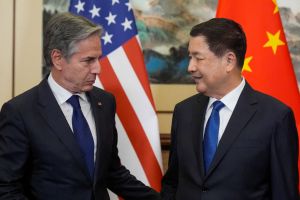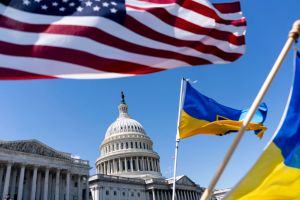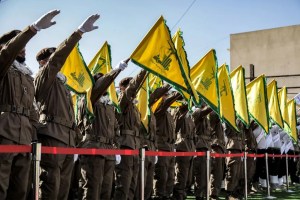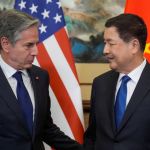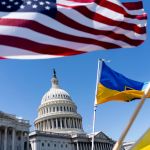President Biden flew into Vilnius, Lithuania early on Tuesday with a big task ahead of him: to keep NATO as united as possible at a time when the alliance is fractured on a bunch of major issues. Foremost among them is when and how to provide Ukraine a path toward eventual membership.
In public, the two-day session will offer group photos of smiling heads of state and warm words about the alliance’s resolve in the face of Russian aggression. But behind closed doors, where the actual business is done, difficult conversations are being had. While NATO’s thirty-one member states (soon to be thirty-two when Sweden’s accession process is complete) have pledged to come to one another’s defense, the fact is that some of these countries have come to the table with different positions.
As expected, the possibility of Ukrainian membership in NATO is getting most of the media attention and sucking up all of the oxygen in the room. In 2008, during a previous heads of state summit, NATO declared in writing that Ukraine, as well as Georgia, would become NATO members at some undefined date in the future.
The Ukrainians have been waiting for the last fifteen years for the alliance to make good on that written pledge. But the question of when to do so has been in a frequent thorn in the alliance’s side. Russia’s decision to launch a war in Ukraine last year means that NATO membership is simply not feasible for the Ukrainians as long as the fighting goes on: the alliance has a decades-long policy that aspiring members need to resolve their territorial disputes before their applications are given serious consideration.
President Biden restated that policy during an interview before his trip to Europe. Simply put: if Ukraine was granted membership now, NATO would automatically be in a war with a nuclear-armed Russia.
Ukrainian president Volodymyr Zelensky understands all that. Yet he remains defiant, if not angry, about what he views as the alliance’s cautious approach. Before heading into the summit, Zelensky tweeted that it would be “unprecedented and absurd” if NATO refused to at least give Kyiv a clear, measurable time-frame on when membership would be an option.
Zelensky isn’t alone in his angst; Estonian prime minister Kaja Kallas, one of Zelensky’s most high-profile allies within the alliance, has gone to bat for Ukraine in the international media, telling the Financial Times last week that “concrete steps” need to be taken so the Ukrainians can go home at night knowing that the world’s most powerful alliance is in its corner (although the more than $70 billion NATO has devoted to the Ukrainian military over the last seventeen months should have delivered the message already).
NATO, however, works on consensus. That means any member state can bring things to a halt or raise concerns that force the alliance to rework the problem. The blunt reality is that NATO’s thirty-one members still don’t see eye-to-eye on the Ukrainian membership question. Whether Zelensky accepts this dispute is irrelevant, it is there whether he likes it or not.
The US remains resistant to offering a clear timeline for its own reasons. Because Washington serves as the heart, lungs and muscle of NATO as a whole, it (rightly) treats the issue of Ukrainian membership, now or in the future, as serious business. As much as the US wants to see Ukraine prevail, it also doesn’t want to fight the world’s largest nuclear power or put itself in the position whereby that fight becomes more, not less, likely.
Germany is on the same wavelength. “The time is not right at this summit for an invitation to Ukraine, for concrete steps toward membership,” a German official said on Monday. “There is no consensus on this among the allies either.”
Beyond Ukraine, the allies will also be knocking heads over NATO’s future trajectory. More specifically, whether the alliance should be spending more time and resources on potential security problems in the Asia-Pacific region (i.e. China).
In 2022, NATO name-dropped China in its Strategic Concept document, listing all of the ways the Asian power is subverting the so-called rules-based international order. NATO secretary-general Jens Stoltenberg has devoted the last few years of his decade-long tenure to trying to strengthen the strategic bonds between NATO and Asian countries such as Japan and South Korea. He invited the two countries to last year’s NATO heads of state summit (Japan and South Korea will be attending this year too). NATO was also flirting with opening a satellite office in Tokyo, partly to reinforce those ties.
Yet some NATO members sour at the idea of the alliance getting involved in Asia’s business. French president Emmanuel Macron has said more than once that Asia isn’t in its remit. NATO, after all, is an acronym for the North Atlantic Treaty Organization, not the North Atlantic and East Asia Treaty Organization. Why the alliance would start expanding to Asia, particularly at a time when Europe is still hosting its deadliest war since 1945, almost belies belief. Macron feels strongly about this: several days ago, the French government announced that it objected to opening a NATO office in Tokyo. The Japanese took the message in their stride.
The summit is occurring as we speak, so what will result from it is still very much up in the air. What can be said for certain is that many of the issues the allies are discussing away from the cameras will continue to percolate after the summit concludes.
This article was originally published on The Spectator’s UK site. Subscribe to the World edition here.
